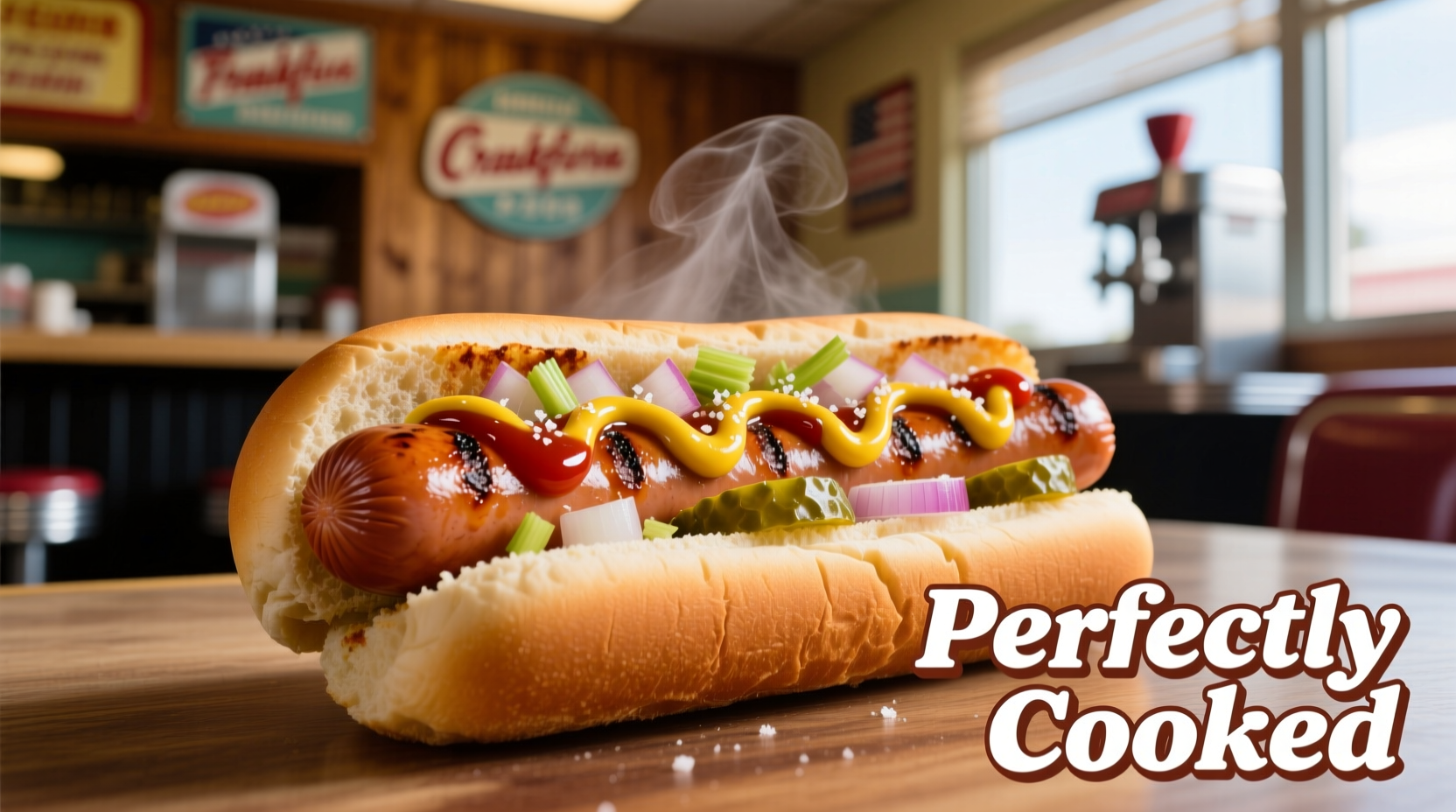Mastering Hot Dog Cooking: Your Complete Guide
Hot dogs rank as America's favorite picnic food, with over 20 billion consumed annually according to the National Hot Dog and Sausage Council. Whether you're preparing them for a backyard barbecue or a quick weeknight meal, understanding proper cooking techniques ensures both safety and maximum flavor. This guide covers every method with professional tips you won't find elsewhere.
Understanding Hot Dog Types and Safety Basics
Before cooking, recognize that not all hot dogs are created equal. Traditional beef hot dogs require different handling than poultry-based or vegetarian varieties. The USDA Food Safety and Inspection Service emphasizes that all hot dogs must reach 165°F internally to eliminate potential listeria bacteria, especially important for at-risk populations.
Always check packaging for specific cooking instructions, as some premium brands contain higher fat content that affects cooking behavior. Never partially cook hot dogs and refrigerate them for later finishing - this creates dangerous temperature zones where bacteria can multiply.
Boiling: The Classic Method Done Right
Boiling remains the most consistent method for evenly cooked hot dogs with minimal risk of burning:
- Fill a saucepan with enough water to cover hot dogs by 1 inch
- Bring water to a gentle simmer (180-190°F) - not a rolling boil
- Add hot dogs and cook for 5-7 minutes for standard sizes
- Remove with tongs to prevent puncturing
- Drain briefly on paper towels before serving
Pro tip: Add 1 tablespoon of vinegar to the water to help maintain casing integrity and prevent splitting. For enhanced flavor, replace 25% of the water with beef broth.

Grilling: Achieving That Signature Char
Grilling creates superior flavor through the Maillard reaction, but requires careful temperature management:
- Preheat grill to medium (350-400°F)
- Make shallow diagonal cuts every inch to prevent splitting
- Cook for 7-10 minutes, turning every 2 minutes
- Use indirect heat for the final 2 minutes to heat through without burning
- Check internal temperature with an instant-read thermometer
According to culinary research from the Culinary Institute of America, the diagonal scoring technique increases surface area by 30%, creating more caramelization points while maintaining structural integrity during cooking.
Pan-Frying: The Indoor Alternative
When outdoor grilling isn't possible, pan-frying delivers excellent results:
- Heat 1-2 tablespoons of canola oil in a skillet over medium heat
- Add hot dogs and cook for 8-10 minutes, turning frequently
- Reduce heat if casing begins to blister prematurely
- Add 1/4 cup water and cover for final 2 minutes to steam interior
- Remove lid and cook 1 minute more to restore crispness
| Cooking Method | Time Required | Best For | Temperature Safety Check |
|---|---|---|---|
| Boiling | 5-7 minutes | Indoor cooking, large batches | 165°F internal temperature |
| Grilling | 7-10 minutes | Flavor development, outdoor events | 165°F internal temperature |
| Pan-Frying | 8-10 minutes | Indoor cooking with crispy texture | 165°F internal temperature |
| Microwave | 1-2 minutes | Emergency quick meals | 165°F internal temperature |
Microwave Method: When Speed Is Essential
While not ideal for flavor development, the microwave works in emergencies:
- Place hot dog in a microwave-safe dish with 1/4 cup water
- Cover loosely with a paper towel
- Cook on high for 45-60 seconds for one hot dog
- Let stand for 30 seconds before handling
- Never microwave hot dogs in their packaging
The FDA recommends this method only when no other options exist, as uneven heating can create cold spots where bacteria survive. Always verify temperature with a food thermometer.
Context Matters: Choosing Your Cooking Method
Your cooking method should match your specific situation:
- Large gatherings: Boiling in batches maintains consistent quality
- Flavor-focused meals: Grilling develops complex char notes
- Weeknight dinners: Pan-frying offers best indoor results
- Emergency meals: Microwave only when necessary
- High-altitude locations: Extend boiling time by 25%
Food scientists at the University of Illinois note that hot dog cooking has evolved significantly since the 1950s, when boiling was the only recommended method. Modern food safety standards now emphasize temperature verification over fixed cooking times due to variations in hot dog composition and size.
Serving and Storage Guidelines
For optimal results:
- Toast buns lightly before serving
- Place hot dogs in buns immediately after cooking
- Serve within 20 minutes for best texture
- Refrigerate leftovers within 2 hours
- Consume refrigerated leftovers within 3-4 days
Never leave cooked hot dogs at room temperature for more than 2 hours (1 hour if temperature exceeds 90°F), as this creates ideal conditions for bacterial growth according to USDA guidelines.
Troubleshooting Common Problems
Fix these frequent hot dog cooking issues:
- Splintering casings: Score hot dogs before cooking and avoid high heat
- Rubbery texture: Don't overcook; verify temperature rather than relying on time
- Uneven cooking: Turn frequently and use consistent heat source
- Bland flavor: Add aromatics to boiling water (onion, garlic, bay leaves)











 浙公网安备
33010002000092号
浙公网安备
33010002000092号 浙B2-20120091-4
浙B2-20120091-4